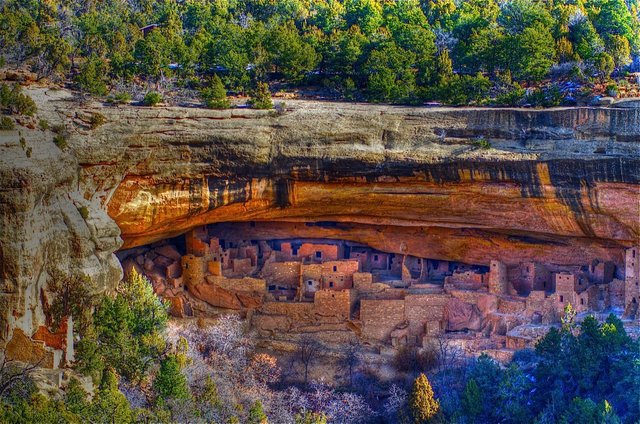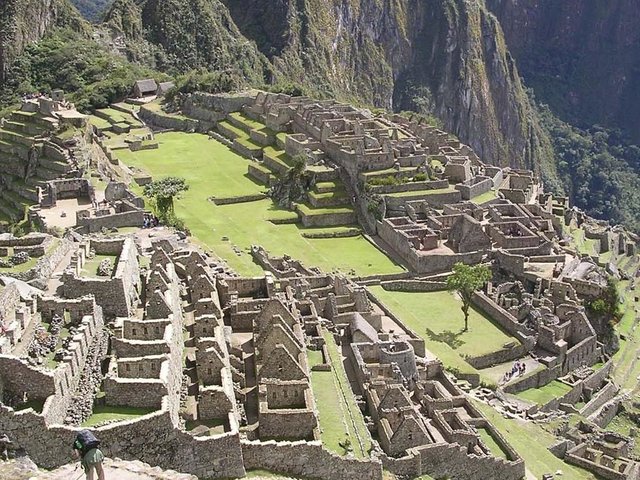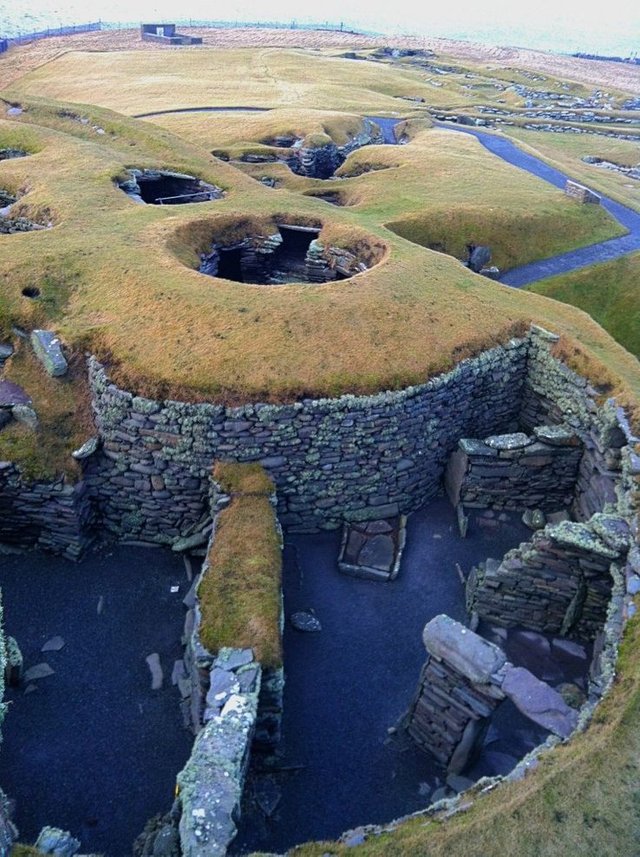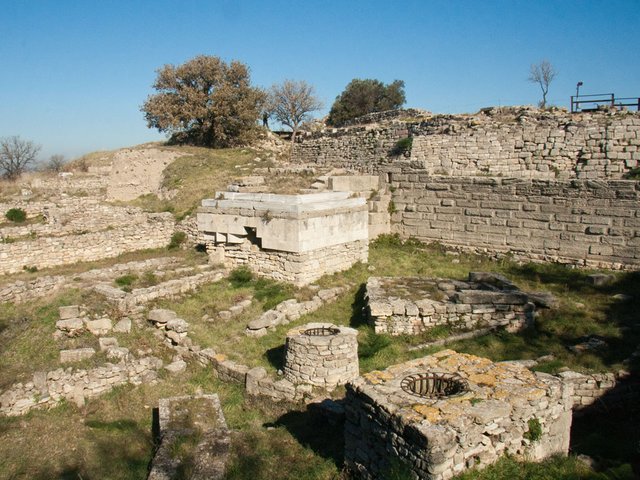
Urban settlements only started after nomads began to cultivate crops. This happened approximately 10000 BC. It had revolutionary effects. These permanent communities began as hamlets and villages. From 8000 BC settlements were built in the Middle East and over years developed into separate areas for, worship, craft and administration. The city was born.
Mesa Verde. The palace in the cliffs.
Long before the Spanish conquistadors arrived, some Latin American communities were living in urban settlements, known as pueblos. Mesa Verde was one of the most remarkable, sheltered by a very large natural cavity in a cliff. The city was a complex of dwellings packed close and organized on a succession of terraces. Among the houses were a number of kiva, circular buildings used for worship. Mesa Verde flourished between 1000 — 1100 Ad.
Skara Brae, a settlement in the Hebrides.

It dates back to the 3rd millennium BC. It was a close - knit village, with paved alleys running between the houses. The dwellings consisted of a single room with circular corners and a central hearth. Skara Brae is one of the best preserved settlements of stone - age Europe. Lerna, a town in Greece also flourished during this time.
Cuzco, capital of the Inca Empire.

In the 15th century AD, Cuzco was probably the oldest South American city still inhabited. It presented the art of perfect town planning. It was geometrically laid out and surrounded by a strong outer wall. Roads were paved and lined with houses made of stone. All was dominated by a citadel within 3 concentric enclosures.
Quebec, the city 'imported' from France.
It's not true that every culture develops urban civilization in its own way. City dwelling was unknown among the Stone Age Indians, before European explorers arrived. Quebec, however, was founded by the French in 1680 AD, where the St Lawrence and the St.Charles rivers met. This was the 1st city built in North America. The architecture was rich with spires, turrets, palaces and churches.
Jarishof, a Viking settlement.

The heart of the 9th century AD settlement was founded on the Shetland Isles. It was a farm surrounded by a cluster of stone houses with pitch roofs. The untidy building layout contrasts with contemporary Viking settlements in Denmark, where houses were symmetrically arranged inside circular walls.
Troy II, Anatolian fortress.

Nine successive cities were built one on top of the other at Troy, present day Turkey. An understanding as to why archeologists are doing so much digging there. The earliest settlement dates back to the end of the 4th millennium BC. The 2nd city was a fortified citadel encircled by powerful ramparts. The royal palace, was at the center with residential quarters grouped around. Troy II fell in approximately 2300BC.
When studying about the ancient history and other subjects, I feel that my general knowledge is far from adequate. That is why Steemit allows one to enlarge and enrich one's knowledge. Whether the past, present or future is discussed, it makes for interesting reading and learning.
Sources : Websters encyclopedia, Oxford dictionary, excerpts from Ancient Cultures Own content. Yandex.
Awesome report and a very great photography. The view looks pretty stylish and so.does the architecture. Wonderful scenery. Thanks for sharing. A very fantastic and mind blowing shot.
Downvoting a post can decrease pending rewards and make it less visible. Common reasons:
Submit
Very interesting post, that period in history fascinates me.
Downvoting a post can decrease pending rewards and make it less visible. Common reasons:
Submit